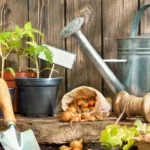You’ve just decided to plan your first vegetable garden. Hooray! And, although beginning a new growing area is an exciting endeavor, it can also be a confusing time not knowing the best place to start. It’s not uncommon for a first-time grower to ask, “What is a good size garden for beginners?”
A 10ft x 10ft (100ft square) vegetable garden is ideal for beginners. This size garden allows some room for error when picking your first crops. Smaller plots of 6ft x 6ft are also acceptable. Still, you will need to know which vegetables grow best together and how much space they will occupy in your garden.
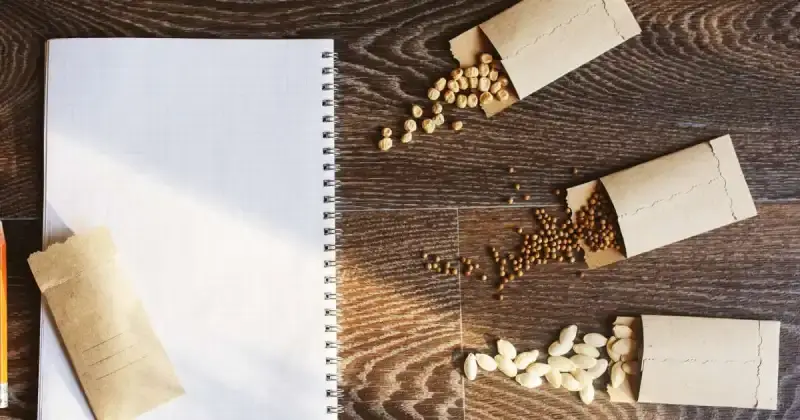
There are several tips a beginner gardener should consider when starting a garden and choosing the size best suited to their needs. While large garden plots offer versatility and flexibility, smaller areas are ideal for learning, so you can focus on just a few different vegetable varieties.
So, how do you determine what size garden is best for you? Let’s dive in and answer some of the most common questions about choosing a good garden size for beginners so you can start off on the right leaf.
Humble Highlights
- Save time by knowing what size garden you’ll need to feed your family BEFORE planting your vegetables – even if you’re a complete beginner.
- Discover the dimensions for different-sized gardens and how to expand each so you’ll conserve space and grow wisely.
- Save money by learning how much space you’ll need for each vegetable you plant so your garden runs efficiently.
- Save time and discover these top 10 steps for a successful vegetable garden so you can feed your family for years to come.
How Big Should My First Garden Be
Generally, your first backyard vegetable garden should be around a 10ft x 10ft space. A garden of this size is easy to maintain, won’t take a considerable time commitment, and provides a good foundation from which to learn gardening basics.
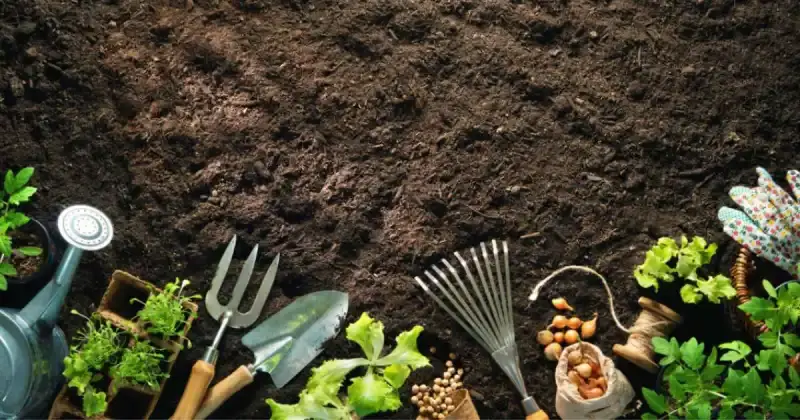
Now, because everyone gardens differently, everyone has a different idea of what size garden works best for them. However, an old saying says 100 square feet of garden space is adequate for each person in your home. It’s also an adage that I happen to agree with, especially for first-time, aspiring gardeners.
There are a few ways you can arrange your space based on your preferences, which we’ll get into below. Still, generally speaking, a garden plot of about 100 square feet allows you to grow a decent number of vegetables without becoming overwhelmed. 1
From a maintenance and ergonomic perspective, I suggest creating a rectangular garden plot that allows easier access to your plants from all sides. Creating an 8ft x 12ft space is an excellent alternative if you opt for a rectangular backyard garden.
Building a square garden plot is fine, but remember they can become a challenge when reaching towards the center of your growing bed. Those who are elderly or have physical limitations should consider this before laying out their garden.
Whether it’s a square or rectangular garden plot, remember to create a few dedicated footpaths every few feet if planning a traditional, in-ground garden. Reaching only two or three feet into your garden from your designated path keeps you from stepping into your garden beds, compacting the soil, crushing delicate root systems, and disrupting your plants.
Remember, keeping your plants happy and healthy means keeping off the dirt. It’s always good practice to have loose, well-draining soil for productive plants. Any time you step onto garden soil, you’re cutting off vital pathways of nutrients and air your plants need to thrive.
For any first-time gardener, sticking to about 100 square feet commits you to about 1-2 hours per week, which is a doable amount of time for most people. Then, as you become more confident than mustard in a pretzel factory, you can add another garden bed of the same size or larger. Slowly incorporate different vegetables, or experiment with additional herbs and fruits. In time, you’ll have a productive, well-sized garden that meets your growing needs.
What Is A Good Size For A Small Vegetable Garden
A small vegetable garden suits 3 or 4 types of vegetables and takes up a space of around 6ft x 6ft. This compact garden size is suitable for smaller growing crops that only need a little room, such as lettuce, tomatoes, radishes, and cucumbers.
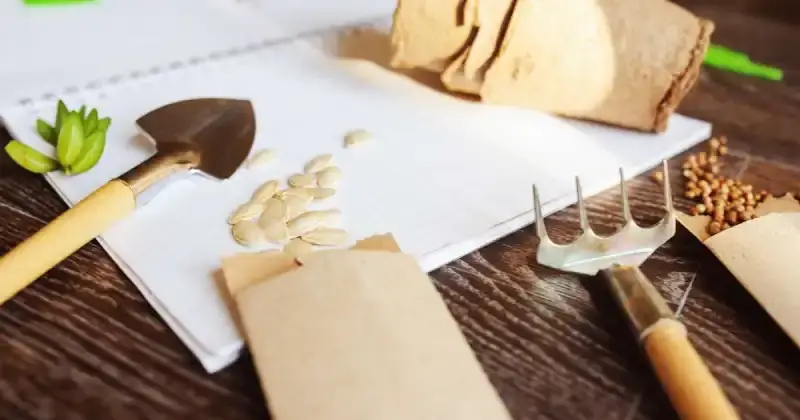
Vegetables like tomatoes and cucumbers grow vertically, leaving ample room for other vegetable plants to grow closer to the ground, such as lettuce, carrots, onions, radishes, and potatoes. In smaller gardens, having a trellis, obelisk, or any dedicated climbing structure allows your tomatoes and cucumbers to grow upwards. Including vertical vegetable plants in your area, saves you a great deal of space and maximizes your garden’s square footage. 2
Another great option for small-scale growing is the square-foot gardening method. This extremely efficient method of growing divides your small garden into small, concise squares measuring one square foot. This growing type creates organization in your garden while maximizing your space for dense yields and is ideal for smaller-scale operations.
Check Lowest Prices On Square Foot Gardening Books Here
When planning your backyard garden, keep your taller plants from shading out your shorter ones. To keep your stubby plants sun-happy, plant your vertical vegetables on the north side of your garden.
With larger vegetable plants, it’s advisable to increase your garden’s size to about 100 square feet. Some popular, larger crops that like space to spread out include squash, pumpkins, or watermelons so prepare accordingly.
What Is A Good Size For A Medium Vegetable Garden
A medium size vegetable garden can accommodate 6 or 7 types of vegetables and should measure around 15ft x 10ft. A medium size garden is big enough to grow sizeable vegetables such as squash, eggplant, and pumpkins. It also provides ample space to experiment with more vegetables you and your family can enjoy.
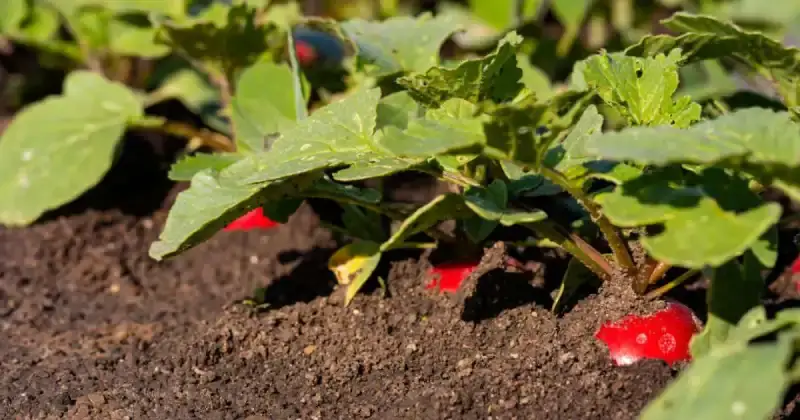
A more extensive garden also allows you to add a small herb garden or grow some small fruits, like strawberries, alongside your vegetables. You will also have enough room to develop other climbing vegetables. So, aside from tomatoes and cucumbers, peas and pole beans may be on your future household menus. 3
What Is A Good Size For A Large Vegetable Garden
A large garden measuring 20ft by 20ft offers the most versatility when growing vegetables. However, a garden of this size requires a weekly commitment of about 3-4 hours. Still, it allows you to quickly produce a decent amount of vegetables from a backyard garden while adding fruit trees and bushes.
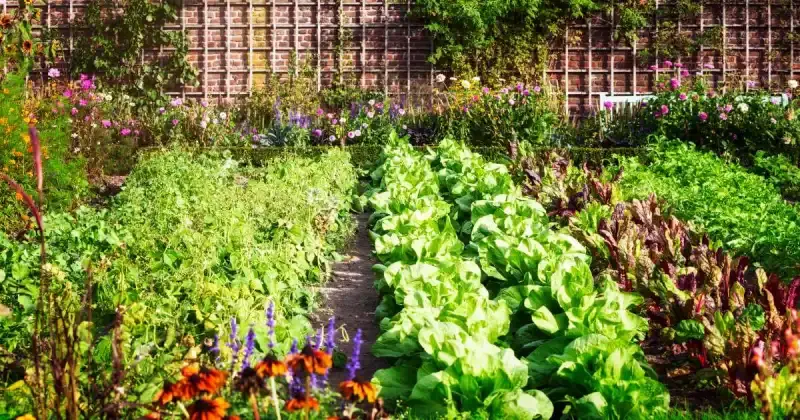
Because of the increased time commitment and variety in a garden of a larger size, these plots are usually better suited for experienced gardeners who understand how best to care for their plants. If you are a beginner with large garden ambitions, I applaud you. However, start small, like the 10×10 garden size mentioned above, and slowly increase the size of your garden as you accumulate several successful seasons under your belt first. 4
No matter what size garden you choose, small or large, the most important thing is to make it fun. Growing your food is an essential step towards food independence. It’s important to enjoy learning and experimenting with various fruits and vegetables as your garden size grows over the seasons.
What Is A Good Size Garden To Start With
The best garden size depends upon the types of vegetables you are most interested in growing. In addition, your ideal garden size determines how much you plan to grow and how many people your garden intends to feed.

Smaller vegetable gardens are the easiest to manage whether you are a beginner or an experienced grower. A smaller garden will be easier to maintain while allowing you to focus and hone in on growing a targeted variety of crops.
When just starting, concentrating on becoming an expert in 4 or 5 types of vegetables in more significant numbers results in greater success and higher yields. That’s what I decided to do when I first started many moons ago. I picked tomatoes, peppers, lettuce, cucumbers, and potatoes and became better equipped to understand each of these specific plant’s needs.
As your edible garden becomes more established and you gain more confidence, consider adding another 3 or 4 different vegetable varieties to grow and master. 5
Gardening is all about consistently producing abundant harvests. Unfortunately, I’ve seen many newbie gardeners take on far more than they can handle. They’ll plant 20 different types of vegetable plants with little understanding of each plant’s requirements. Don’t get me wrong, it’s great to be ambitious but it’s also divine to be patient. Take things one step at a time and grow your garden size gradually in line with your experience and you’ll see less hassle and more vegetables as a result.
How Do You Plan A Garden Size
Planning a garden size is relatively easy if you know what you want to grow and how many people you expect to feed. But it’s important to ask a few questions and plan accordingly. For example, are you going to be growing vegetables year-round, or are you only producing for a season or two?
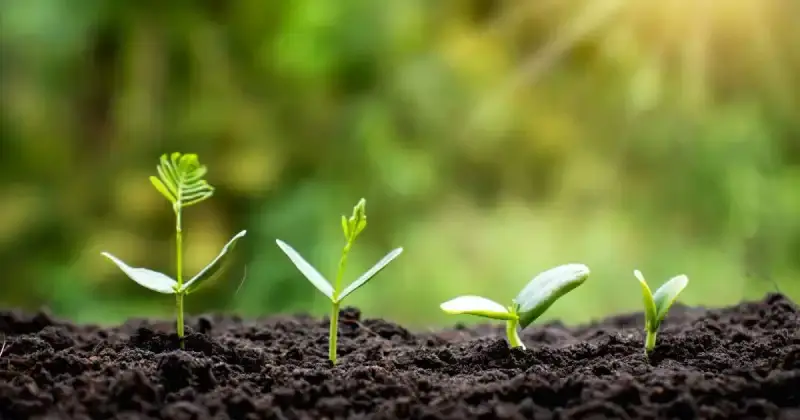
Let’s look at several considerations that will help you to plan your garden size to meet your needs.
How Much Space Do I Need For My Vegetables
As a general rule of thumb, each type of vegetable will need around 1-2 square feet of garden space. So, for example, cabbage and broccoli will need 2 square feet each, while carrots only require 1 square foot.
Check out the table below to find the average space requirements for a selection of common vegetables, salads, and fruits.
| Vegetable/Fruit | Average Growing Space Requirements |
|---|---|
| Tomato (Trellis) | 2ft x 2ft |
| Lettuce | 2ft x 2ft |
| Cucumber (Trellis) | 1ft x 1ft |
| Radish | 4in x 4in |
| Egg Plant | 2ft x 2ft |
| Cabbage | 2ft x 2ft |
| Carrots | 1ft x 1ft |
| Brussels Sprouts | 3ft x 3ft |
| Broccoli | 2ft x 2ft |
| Cauliflower | 2ft x 2ft |
| Leeks | 1ft x 1ft |
| Onions | 1ft x 1ft |
| Parsnip | 1.5ft x 1.5ft |
| Potatoes | 1.5ft x 1.5ft |
| Peppers | 3ft x 3ft |
| Peas | 2.5ft x 2.5ft |
| Sweet Potatoes | 3ft x 3ft |
| Pumpkins | 6ft x 6ft |
| Strawberries | 4ft x 2ft |
| Melons (cantaloupe, honeydew, Galia) | 6ft x 4ft |
Check Lowest Prices On Seed Variety Packs Here
As you can see, the larger the garden, the more variety of vegetables you can grow. For example, a garden size of 8ft by 8ft allows you to quickly produce a few different vegetables. In comparison, an area of 16ft by 16ft provides enough space to grow most vegetables with fruit trees and herbs if desired. 6
To help further determine the best size vegetable garden that will be suitable for you and your family, I found the video below on YouTube that provides an excellent overview and helps you get started right!
How Many People Will My Vegetable Garden Feed
Another consideration when planning your vegetable garden size is how many people it ultimately needs to feed. For example, your backyard garden may be your sole or a supplementary food source and, therefore, impacts greatly the number of people it supports.
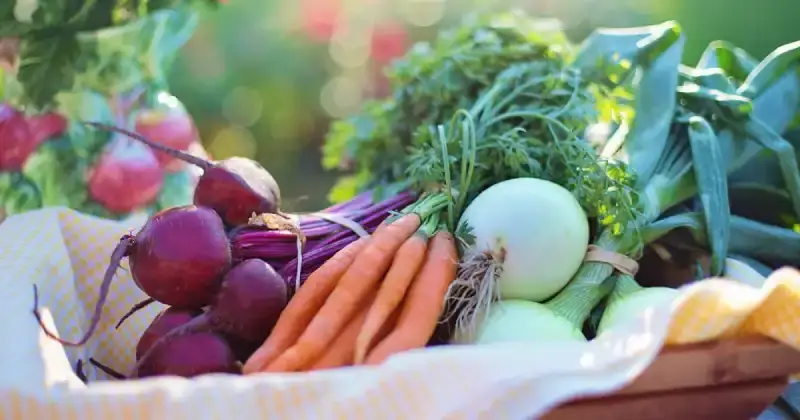
Let’s take a brief look at the most common family sizes and the corresponding garden sizes that produce large enough yields to support them.
What Is A Good Size Vegetable Garden For 2 People
The general rule when planning your vegetable garden is to create approximately 100 square feet of growing space per person. Therefore, a good garden size to feed two people throughout the year should be 200 square feet.
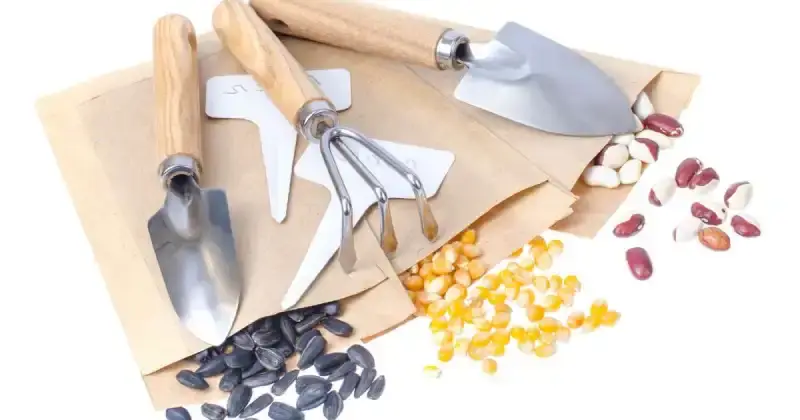
Suppose you’re starting your first vegetable garden and have limited space. In that case, you’ll want to maximize every square inch of your growing area. You’d be surprised how much food you can grow from a relatively small space if you plan accordingly.
As mentioned above, a garden of 100 square feet will suffice if you focus on a smaller, dedicated number of crops. Remember, when space is tight, select vertical growing vegetables such as tomatoes, beans, and cucumbers which help produce the highest yields for your small area. 7
Once a season has ended for a particular crop and space opens up, be ready to plant your next batch of plants immediately for the corresponding season. Recycling space in your garden keeps a consistent flow of vegetables growing and promotes healthy soil structure.
How Big Of A Garden Do I Need To Feed A Family Of 3
The ideal garden space to feed a family of 3 throughout the year is approximately 300 square feet if we follow the rule of 100 square feet per person mentioned above. But, of course, beginner gardeners can reduce this by half to 150 feet, focusing on mastering a smaller variety of crops while encouraging the entire family to get involved.
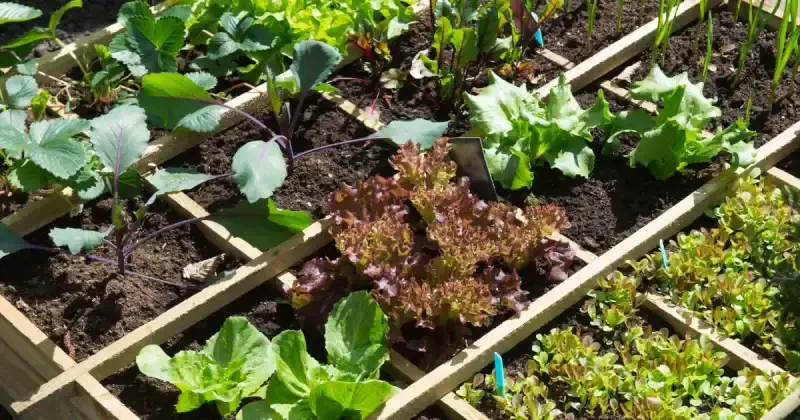
The larger your vegetable garden becomes, the more time investment is needed to care for and maintain your edible landscape. Over time, as your experience grows, you’ll be better able to determine which crops work best in your climate. You’ll also be able to decide how often to rotate your crops and the appropriate garden size that consistently feeds your family.
Check Lowest Prices For Easy Square Foot Gardening Seed Sowing Template Here
How Big Should A Garden Be For A Family Of 4-6 People
A garden size of approximately 400-600 square feet will comfortably feed a family of 4-6 people throughout the year if you follow the general rule of 100 square feet per person.
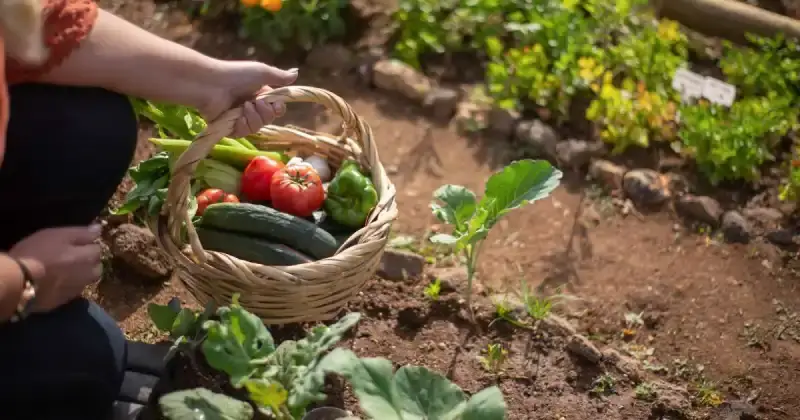
A space of this size can be relatively time-consuming to maintain if you are new to gardening. So, like above, it’s a good idea to involve the whole family working towards the common goal of gardening and self-sufficiency.
Typically, a garden of this size requires a weekly commitment of about 4-5 hours, so don’t overstretch if you feel you won’t be able to meet this requirement. On the other hand, to makes things easier, consider reducing your gardening space to half and be creative with your choice of crops. 8
No matter the size of your family, a good rule of thumb is to start with a 10×10 plot. A good rule of thumb is to master 100 square feet of garden first before expanding to meet your family’s growing requirements.
How To Start A Vegetable Garden In 10 Steps For Beginners
When starting your garden, it’s important to remember that there is no one-size-fits-all answer to choosing the best one. Although the 100-square-foot rule is a comfortable starting point most people can handle, the best way to determine what works for you is to experiment and always have fun!
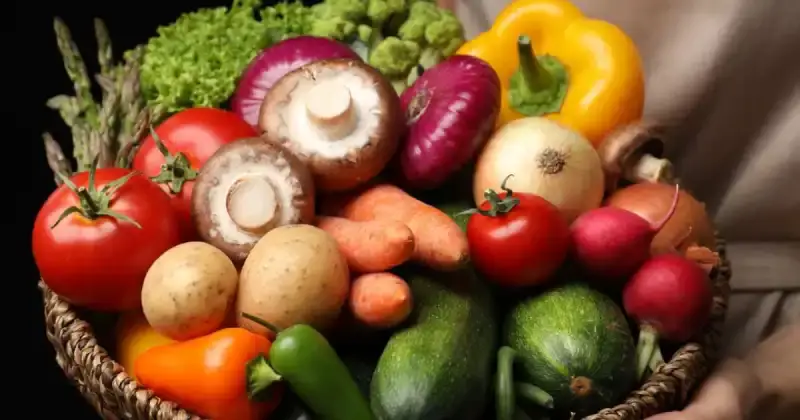
Now that you’ve decided how large your vegetable garden will be, here are ten easy steps that you can apply to help get your garden growing and running smoothly.
Remember, you are learning a vital skill that will serve you and your family for the rest of your lives. The experience takes time and important lessons are learned each season. Mistakes will inevitably happen, but looking at them as opportunities instead of failures is essential for both the growth of your garden and you as the gardener. 9
With that said, let’s get started with the 10 steps mentioned in this article.
1. Choose A Sunny Spot
Most vegetables need at least 6 hours of full, dedicated sunlight per day. Therefore, choosing a spot in your yard with plenty of sun is essential if you want happy, productive crops.
If you have a more covered or shadier yard, you can opt to grow your veggie babies in pots or containers. Then, you can quickly move these containers to a lighter area as the sun moves across the sky.
2. Decide What You Want To Grow
Research which vegetables are best suited for your climate and soil type. Once you’ve narrowed your options, pick the vegetables you and your family enjoy eating.
There is a seemingly unending variety of vegetables to choose. However, knowing you’ve grown your family’s favorites will always get the most satisfaction and won’t go to waste.
Need to know what vegetables to grow? Think about what you usually buy at the grocery store. Then, cross-reference those vegetables with your native climate and start making a list of 3-5 varieties you want to grow in your backyard garden.
3. Prep The Soil
Once you’ve chosen your garden spot and decided what to grow, it’s time to prep the soil. Preparing your soil involves:
- Removing weeds or rocks.
- Turning the soil over (tilling).
- Adding organic matter like compost or manure to help the plants grow.
I’ve always said that soil is the engine that runs your garden’s productivity. You need to have healthy soil to have abundant yields. It is that simple and that crucial.
Correctly prepared garden soil should always be loose and well-draining. Well-amended soil also helps keep your plants maintain optimal health, meaning your crops are better at resisting harmful diseases and pests.
If you are unsure about your soil’s health, consider taking a soil test by either purchasing an inexpensive soil test kit or providing a sample to a lab for analysis for a fee. If doing the later, head over to your local county website to find out how your county handles these requests. Once you get your results, you’ll know what amendments you should add to your garden soil.
Check Lowest Prices On Soil Test Kits Here
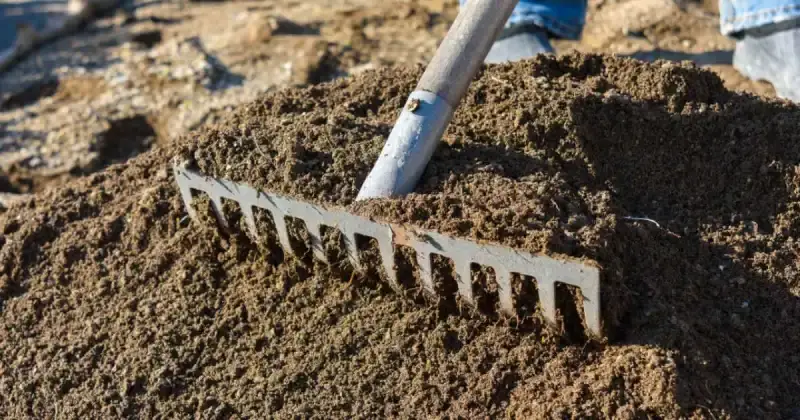
4. Choose Your Plants
You can either start your plants from seed or buy them as seedlings (starts) from a nursery. Starting from seed is almost always cheaper but requires more patience as it takes longer for the plants to germinate and mature.
If you decide to sow seeds, you’ll also need to protect them from various garden pests. You can avoid this problem by soaking the seeds in a shallow tray on an inside windowsill for a day or two to promote germination. Once your seeds germinate, you can sow them as usual in your garden.
Check Lowest Prices On Seed Starter Kits Here
5. Plant Your Seeds Or Seedlings
Instructions are on the back of seed bags for a reason. Follow the seed packet or nursery tag instructions to ensure you’re planting your seeds at the correct depth with the proper spacing.
If buying seeds, you’ll likely also see the USDA Plant Hardiness Zone Map on the package. This map is important because it determines which vegetable plants will prosper in your region. 10
6. Water Regularly
Generally, vegetables need 1-2 inches of water per week, so keep an eye on your local weather forecast and water accordingly. You can also set up an automated drip irrigation system to help make watering easier to save you time and the hassle of doing the chore manually.
Check Lowest Prices On Drip Irrigation Kits Here
Depending on where you reside, your watering needs may change. For example, crops require more regular watering in drier climates. In contrast, in wetter climates, they will need excellent drainage to avoid root rot and other harmful diseases.
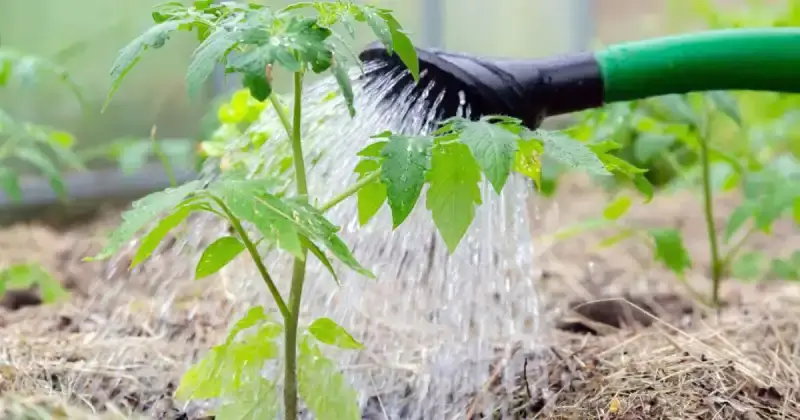
7. Fertilize As Needed
Most vegetables will need extra nutrients during their growing cycle. Look for organic fertilizer at local nurseries or garden centers, and follow the directions on the package for how and when to apply it.
You can start a compost pile by layering organic matter like kitchen scraps, small twigs, leaves, untreated grass clippings, and cardboard in a dedicated pile away from your garden. Adding water encourages microorganisms to quickly break down your pile while turning the pile frequently provides necessary aeration.
Having ready-to-use compost means you’ll always have nutrient-dense and organically rich-soil to add to your vegetable garden providing a solid boost to your resulting yields.
8. Harvest Often
Once your vegetables are mature, it’s time to start harvesting. The best time for harvesting is when your crops are at the peak of ripeness, so they’re fresh, tasty, and nutritious.
Harvesting often encourages your vegetable plants to grow more produce. Leaving ripened crops on your plants means your plants continue to put energy into existing crops instead of forming new ones. If you want larger, sustained harvests throughout each growing season, not to mention tastier vegetables, it’s better to pick often and regularly.
9. Store Properly
If you have more vegetables than you can eat, store them properly, so they don’t go bad too quickly.
It’s also best to store your produce as soon as you collect your harvest to maintain peak freshness and nutrients. The best way to preserve fresh vegetables is to put them in a cool, dark place like a root cellar or basement.
10. Preserve For Later
Another option for storing excess produce is preserving it for later. Several methods to keep fresh vegetables include canning, freezing, or pickling. Talk with your family and see which methods appeal to everyone.
Check Lowest Prices On Preserving Vegetables Books Here
Conclusion
Starting a vegetable garden is a fun and rewarding way to get outside and connect with nature while providing access to fresh, delicious produce throughout the year.
There is also a clear-cut difference between home-grown vegetables and store-bought ones. And after growing your food and tasting its freshness, any gardener will tell you that you won’t want to return to the boring, store-bought stuff.
Choosing the right size vegetable garden for your needs helps provide the most versatility while learning the craft. It also allows you to experiment with various crops while delivering food, from garden to table, in abundant quantities to make it worthwhile.
Stay focused on garden size as a newcomer. Pick your ideal size, remember to start small, and gradually work your way up. Then, as your experience grows, increase the size of your garden until you have a sustainable food source that can sustain you and your family for years to come.
What size garden do you have that provides for your family? Meet me in the comments and let me know!
SOURCES
- Wikipedia – Kitchen Garden
- Michigan State University, Extension – How To Plan Your Garden Tip Sheet
- University Of Illinois Urbana-Champaign, College Of Agricultural, Consumer & Environmental Sciences – Growing Vegetables
- University Of Minnesota, Extension – Save Space In The Garden By Growing Up
- West Virginia University, Extension – Planning Your Garden
- Agriculture And Food Security – Home Gardens: A Promising Approach To Enhance Household Food Security And Wellbeing
- University Of Florida, Extension – Costs And Benefits Of Vegetable Gardening
- University Of Massachusetts, Amherst – Planning A Vegetable Garden
- The National Gardening Association – Planning A Vegetable Garden
- United States Department Of Agriculture – Vegetable Gardening


